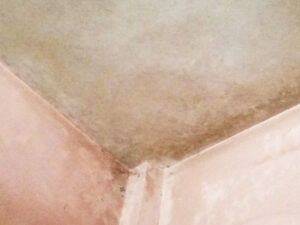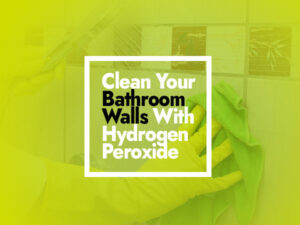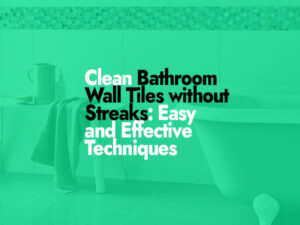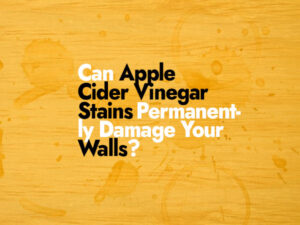As a homeowner, I take great pride in maintaining the exterior of my house, including the brick walls. But over time, they began collecting dirt, grime, and mold that seemed resistant to my cleaning efforts. That was when I discovered muriatic acid’s powerful cleaning abilities!
Muriatic acid is a highly effective cleaning agent that can effectively eliminate tough stains on brick walls. But as I soon learned, it can also be dangerous, necessitating proper handling and safety precautions to use safely and effectively for brick wall cleaning. After conducting extensive research and consulting with experts, I learned how to safely use muriatic acid to get my brick walls clean again.
Are You New to Cleaning Brick Walls with Muriatic Acid? If you are just starting out cleaning brick walls with muriatic acid, this guide is for you. I will share my expertise on how to safely and efficiently use muriatic acid for brick wall cleaning, using tools, safety gear, and techniques with which you can transform your brick walls into fresh new features in your home!
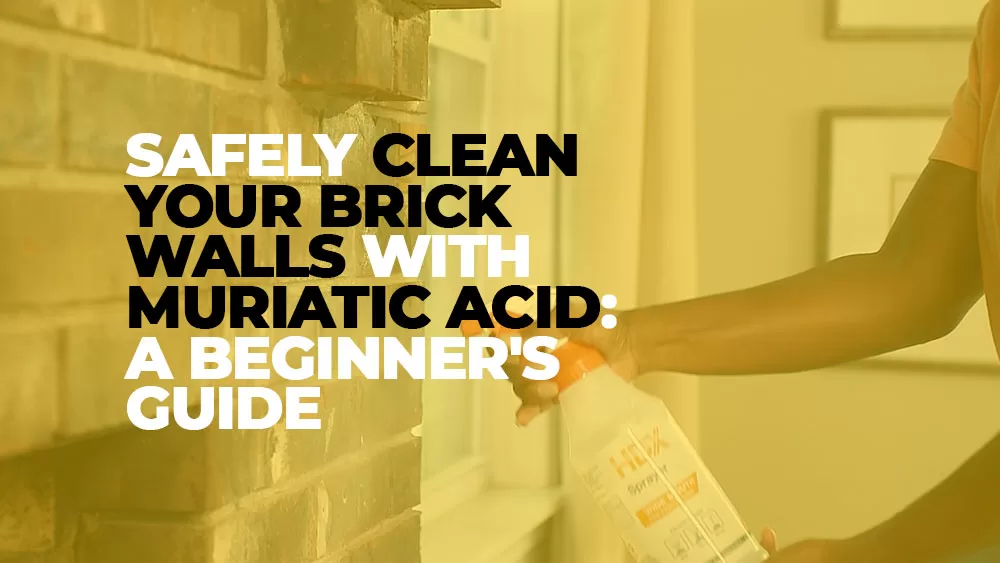
Prepare Your Brick Wall for Muriatic Acid Cleaning
Before applying muriatic acid to your brick walls, it is crucial that the surface be properly prepared so the cleaning solution can be as efficient as possible. Here are a few important steps you should follow before using muriatic acid for brick wall cleaning:
Remove Loose Dirt and Debris
Begin by clearing away any loose dirt, debris, or cobwebs from your brick wall using either a soft-bristled brush or a vacuum cleaner equipped with a brush attachment. Doing this will allow the muriatic acid to penetrate deeper layers of grime and stains more effectively.
Test for stains
Before using muriatic acid on brick walls, it is a wise practice to conduct an initial assessment of the type and severity of stains. This will enable you to better ascertain whether muriatic acid will meet your specific needs. Use a small amount diluted with water on an inconspicuous area to see how the acid reacts, and if necessary increase its strength for tough stains.
Cover Nearby Surfaces
Muriatic acid is an acidic cleaning solution, capable of potentially harming nearby plants, wood, and metal surfaces. Such as those of plants or furniture that come into contact with it during cleaning sessions. Therefore it is vital that any areas that could come into contact with it during its application be covered accordingly. Using plastic sheeting or drop cloths may protect these nearby objects as you work.
Protect Yourself
Muriatic acid is a potency chemical, capable of causing skin and eye irritation, so it is crucial that when using it for brick wall cleaning, you take steps to protect yourself properly. Wear gloves, eye protection, and a respirator in order to stay protected against direct exposure to acid solutions. Additionally work in well-ventilated environments in order to minimize inhaling fumes from the solution.
Follow these preparation steps to help ensure that your brick wall is ready for safe and effective cleaning with muriatic acid.
Mixing Muriatic Acid and Water: The Right Proportions for Safe Cleaning
Mixing muriatic acid and water together to form an effective brick wall cleaning solution is a crucial step. Proper proportions must be used in order to guarantee safe and efficient cleaning. Here are some helpful tips for mixing muriatic acid and water for brick wall cleaning:
Pick the Right Strength: Your muriatic acid solution needs will depend on the severity of stains on your brick wall, with mild cleaning usually only needing one part of muriatic acid for every 10 parts of water. While for more serious stains it could require increasing its concentration up to a 1:3 ratio.
Add Acid to Water, not Water to Acid: When mixing muriatic acid and water, it’s essential that the acid be added first. Otherwise, it could spark or react violently, potentially becoming dangerous. Always add slowly while stirring continuously so as to ensure proper dilution.
Use non-reactive containers: Use non-reactive containers mes When mixing muriatic acid and water, it is vitally important to use non-reactive containers, such as plastic or glass containers. Metal can react with muriatic acid and create potentially deadly chemical reactions.
Protect Yourself: When working with muriatic acid and water, it is vitally important to wear protective gear, including gloves, eye protection, and a respirator. This will reduce exposure to acid solutions as well as any risk of skin and eye irritation or respiratory conditions.
By following these tips, you can mix muriatic acid and water safely for brick wall cleaning needs. Please be mindful when handling muriatic acid; use extreme caution when working with it and do not mix it with any other chemicals.
Applying Muriatic Acid to Brick Walls: Techniques for Even Coverage
Applying muriatic acid to your brick wall requires careful consideration to ensure even coverage and safe handling of the cleaning solution. Here are some tips for applying muriatic acid:
Choose the Ideal Weather Conditions: For optimal results when applying muriatic acid to brick walls, it is crucial that the conditions are ideal. Hot, sunny days should be avoided as they could cause too much acid to dry too quickly, leaving residue behind on your surface. Aim for cool cloudy days without too much wind for best results.
Apply the Solution Evenly: When applying muriatic acid to your brick wall, it is essential that you use either a sprayer or brush to distribute the solution uniformly across its surface. Be careful when applying too much solution at once as too much acid could dry too quickly and leave behind streaks or residue.
Use a sprayer or a brush: Apply muriatic acid to your brick wall using either a sprayer or brush. Sprayers provide more even coverage of larger areas, for more precise control in smaller areas or with smaller areas, using a brush may be best.
Work in small sections: Apply muriatic acid slowly in small sections for even coverage and to prevent too rapid drying time. Working in small sections is key to creating even coverage and keeping the acid from drying too quickly. Apply one section at a time using the solution before quickly brushing or scrubbing, that area using either a brush or scrubber in order to help the solution penetrate deeper into your brick wall.
Rinse the surface thoroughly: After applying muriatic acid to your brick wall, it is crucial that it is rinsed with fresh water in order to eliminate any leftover acid residue or debris left by its application. Doing this will prepare the surface for neutralization and further steps of cleaning in your cleaning process.
By following these techniques for applying muriatic acid to brick walls, you can ensure even coverage and safe handling of this cleaning solution. As always, always exercise caution when handling muriatic acid; always abide by safety protocols to avoid potential risk or harm to yourself or others.
Scrubbing Your Brick Wall: Tools for Effective Clean-up
Once you’ve applied muriatic acid to your brick wall, the next step should be scrubbing to remove any stains or debris. Selecting appropriate tools is essential to getting optimal results. Here are some great tools for cleaning brick walls:
Stiff-bristled brush
One of the best tools for scrubbing brick walls is a stiff-bristled brush, as its stiff bristles help loosen and remove dirt, grime, and other stains while working an acid solution deep into its pores to achieve an effective deep clean. Synthetic bristles may be better as natural ones may become damaged from acids used during treatment.
Scrubber Pad
Scrubber pads can be an invaluable aid when it comes to cleaning up brick walls. Constructed from abrasive materials, scrubber pads are an effective tool for eliminating tough stains and debris while simultaneously working the acid solution into its pores for an in-depth clean. Look for pads designed specifically for use on masonry surfaces compatible with muriatic acid for best results.
Pressure Washer
A pressure washer is an invaluable tool for scrubbing brick walls, using high-pressure water jets to quickly blast away dirt and grime. In addition, pressure washers are great tools for quickly and easily rinsing surfaces after applying muriatic acid. Their powerful stream can quickly clear away any residue or debris quickly and easily. However, make sure that you select a pressure washer with adjustable pressure settings to avoid damaging brick surfaces during use.
Sponge or Cloth
A sponge or cloth can be helpful for cleaning smaller areas of brick walls as well as spills or drips of acid solution from your bricks. When selecting one made of non-reactive material such as polyester or nylon to avoid chemical reactions with acid solution.
Choose the proper tools for scrubbing brick walls to achieve effective cleaning results and help protect their surface from damage. Always exercise extreme caution when working with muriatic acid and adhere to all safety guidelines to reduce the risk of exposure or injury.
Rinsing Your Brick Wall: Removing Remaining Muriatic Acid and Debris
Rinsing brick walls after cleaning with muriatic acid is essential in order to remove any remaining acid and debris, and here are some effective tips for effective rinsing:
Make Sure There Is Plenty of Water: When rinsing brick walls, it is vital that sufficient amounts of water are used in order to thoroughly remove acid and debris buildup. A hose or pressure washer are useful tools in accomplishing this task. Be sure that enough water covers every surface on your brick wall surface.
Rinse from Top to Bottom: When rinsing a brick wall, start from the top and work your way down; this will prevent streaking while simultaneously ensuring all acid and debris have been effectively eliminated from its surface.
Check for residue: After you’ve rinsed your brick wall, take time to inspect for any residual acid or debris left behind. Any areas which appear discolored or stained could indicate that further rinsing is necessary.
Neutralize the surface: After you have cleaned and rinsed your brick wall, it is crucial to neutralize its surface to prevent any remaining acid from causing further damage. Baking soda mixed with water works perfectly for this step. Apply it directly onto the surface for several minutes before rinsing off with clean water.
Inspect the surface: Once your brick wall has been rinsed and neutralized, inspect its surface carefully for signs of damage or other issues that require repairs. Such as cracks, chips, or any other signs that it needs restoring. Look out for cracks, chips, or anything else that needs attention that needs to be addressed as soon as possible.
Adherence to these guidelines for rinsing brick walls after cleaning with muriatic acid will help ensure the surface is thoroughly cleaned and protected from further damage. Please use caution when working with muriatic acid and follow all safety regulations as set forth, in order to minimize the risk of exposure or injury.
Neutralizing Muriatic Acid: Ensuring That Brick Wall Is Compatible with Paint and Other Finishes
After cleaning with muriatic acid, it is vital that any leftover acid be neutralized so as to provide a surface suitable for painting and other finishes. Muriatic acid is an extremely corrosive acid and, if left unchecked, could continue corroding and cause further damage.
Here are a few tips for neutralizing muriatic acid on brick walls:
Prepare a Neutralizing Solution: To neutralize muriatic acid on a brick wall, a mixture of baking soda and water must be created in a large bucket or container. Combine one pound of baking soda with 5 gallons of water in a bucket or container and stir the solution well so all of the baking soda dissolves completely.
Apply the solution to the surface: Utilize a brush or sprayer to apply baking soda solution directly onto the brick surface, taking care to cover every crack or crevice of its entirety. Allow the solution to sit for at least 10-15 minutes.
Rinse the surface with clean water: Once the neutralizing solution has been applied to the surface, rinse off with clean water. Use either a hose or pressure washer to ensure all baking soda solution has been removed from your brick wall.
Inspect the surface: Once your surface has been rinsed clean, inspect it closely for signs of damage or discoloration. Particularly pay attention to any areas which still appear discolored or stained as this could indicate more neutralizing is necessary.
Allow the Surface to Dry: After rinsing the brick wall surface, allow it to fully dry before applying any paint or other finishes. To ensure that its surface has been fully neutralized and safe for the application of paint or finishes. This will ensure a reliable finish is applied.
Neutralizing muriatic acid on brick walls will ensure they are safe for painting and other finishes, such as staining. When working with muriatic acid, always take precautions and adhere to all safety guidelines to reduce risks of exposure and injury.
Safety Precautions to Consider When Cleaning Brick Walls with Muriatic Acid
Muriatic acid can be an effective solution to remove stubborn stains and buildup from brick walls, but it comes with certain risks. Muriatic acid is a strong corrosive acid that may result in serious injuries if handled improperly. Here are some safety precautions you should observe when using muriatic acid to clean brick walls:
Wear Protective Clothing: Always use caution when working with muriatic acid. Wearing long-sleeved shirts, pants, gloves, and eye protection will protect both you and your eyes from being exposed to its acid. This will also prevent possible contamination with harmful substances in the acid.
Work in a well-ventilated area: Muriatic acid produces harmful fumes that may irritate respiratory issues if inhaled, so always work in an open and ventilated space such as outdoors or an appropriately ventilated room indoors. Open windows and doors as necessary to ensure adequate ventilation if working indoors.
Mix Muriatic Acid Correctly: When mixing muriatic acid and water, always add acid first. Otherwise, the mix could spill and potentially cause harm. Doing this will also reduce splashback risks which could otherwise arise and could result in injuries to those involved.
Use the correct proportions: Make sure your mixture contains the correct ratios of muriatic acid and water when creating your solution. With one part muriatic acid for every ten parts of water used as a ratio. Overdoing it could result in overpowering effects that damage brick walls.
Apply the mixture evenly mes: Make sure the muriatic acid and water combination is evenly spread on all areas of the brick wall surface. To ensure an even distribution of acid and efficient cleaning for all parts. This will also ensure all areas are attended to.
Rinse thoroughly: After applying an acid mixture, be sure to thoroughly rinse your brick wall with clean water. In order to flush away any residual acid or debris that has remained behind. This will help ensure an even surface for painting or plastering purposes.
Dispose of the mixture properly: After using the acid mixture, dispose of it according to local regulations. Do not dispose of it down the drain or onto the ground as this could harm the environment.
Follow these safety measures when cleaning brick walls with muriatic acid to help ensure that both yourself and your property remain safe from potential harm. Whenever using muriatic acid, always exercise extreme caution, following all relevant safety guidelines to reduce exposure or injury risks.
Understanding When and How to Use Muriatic Acid for Brick Wall Cleaning: Recognizing Its Limits
Muriatic acid can be an effective tool for cleaning tough stains and buildup on brick walls, but it isn’t always the ideal choice. Understanding its limitations will allow you to make informed decisions about when it is suitable to use for wall cleaning purposes.
Muriatic acid can be effective at dislodging mineral deposits, efflorescence, and other hard-to-remove stains from brick walls. But may not be sufficient to eradicate dirt, grime, and organic stains such as mold or mildew from them. Instead, mild detergent solutions or pressure washing might prove more suitable.
Muriatic acid is a potent and corrosive acid that can severely damage brick walls if used incorrectly. If left on too long, muriatic acid could erode away at brick surfaces, permanently discolor them or cause permanent discoloration. Furthermore, improper dilution could further weaken brick structures by eating away at their integrity over time.
Before using muriatic acid for brick wall cleaning, it is vitally important to conduct a spot test in an inconspicuous area of the wall. This will enable you to see how the acid interacts with its surroundings and make sure there is no damage caused by its application.
Safety should always come first when using muriatic acid. Always wear protective clothing and work in an area with adequate ventilation, mixing acid and water in their proper proportions so as to prevent creating too strong of a mixture.
Alternative Brick Wall Cleaning Methods: Assessing Muriatic Acid to Other Solutions
Muriatic acid may be effective at cleaning certain stains off brick walls, but there are also alternative cleaning methods that may be equally as efficient and safer to use. Below are a few such solutions for you to consider:
Pressure Washing: High-pressure water can be an effective method for clearing away dirt, grime, and organic stains from brick walls without harsh chemical solutions such as muriatic acid. Plus it requires less protective gear.
Detergent Solution: A mixture of warm water and mild detergent can be an effective way of cleaning brick walls of dirt, grime, and organic stains. This solution is less harsh than muriatic acid and therefore may provide safer options for regular maintenance cleaning.
Baking Soda and Water: Mixing baking soda and water can provide an easy and safe solution to remove tough stains on brick walls, including those caused by grease, oil, or other organic substances. This solution has proven its worth time after time!
Steam Cleaning: Steam cleaning is an efficient and safe method of brick wall cleaning that uses high-temperature water vapor to break down dirt and grime, leaving your brick walls looking new again.
When selecting a cleaning method for your brick wall, it’s essential that you consider both the type of stain being removed as well as its condition and the safety precautions taken. Using proper equipment and protective gear can help ensure you remain unharmed during this process.
Sustaining Brick Walls After Muriatic Acid Cleaning: Strategies for Long-term Success
Once you’ve cleaned your brick wall with muriatic acid or another cleaning solution, it’s important to take steps to preserve its cleanliness and integrity. Here are some suggestions for taking care of maintaining it post-cleansing:
Regular Cleaning: Frequent brick wall cleanings will help prevent the build-up of dirt, grime, and stains on its surface. Use mild detergent solutions or pressure washing at least annually or as required to keep it looking its best.
Sealing: Sealing your brick wall can help prevent water and dirt from penetrating its surface and creating stains and damage, as well as provide some degree of insulation against noise pollution. Many different kinds of sealers exist such as acrylic, silicone, and siloxane-based options to choose from when selecting sealers for your brick-and-mortar wall.
Repairing cracks and damage: Cracked brick walls allow water to seep into their surfaces, leading to further staining and damage. Any such cracks should be addressed as soon as they appear so as to maintain the structural integrity of your wall and protect its aesthetic appeal.
Avoid Harsh Chemicals: Harsh chemicals or abrasive tools should not be used on brick walls as these may damage its surface and compromise its integrity, possibly leading to irreparable surface damage and compromise its integrity.
Monitoring for efflorescence: Efflorescence, the white powdery substance that often forms on brick walls, can indicate issues with water infiltration. Keep an eye out for signs of efflorescence to quickly address any water infiltration problems on your wall.
Maintenance is key when cleaning with muriatic acid or another solution, especially over the long haul. Cleaning, sealing, repairing damage, and monitoring for efflorescence should all be part of preserving its cleanliness and integrity.
Final Thoughts
Cleaning brick walls with muriatic acid is an effective way to tackle tough stains and restore their appearance, providing long-term benefits. But, for best results, it is crucial that safety precautions and techniques be observed carefully to avoid injury to yourself and damage to your wall. Likewise, understanding its limitations as well as possible alternative cleaning solutions should also be kept in mind if necessary. Once clean, taking steps to maintain its appearance should also be undertaken for long-term success; by following these guidelines and seeking professional assistance when necessary you can ensure it keeps looking its best for years!



